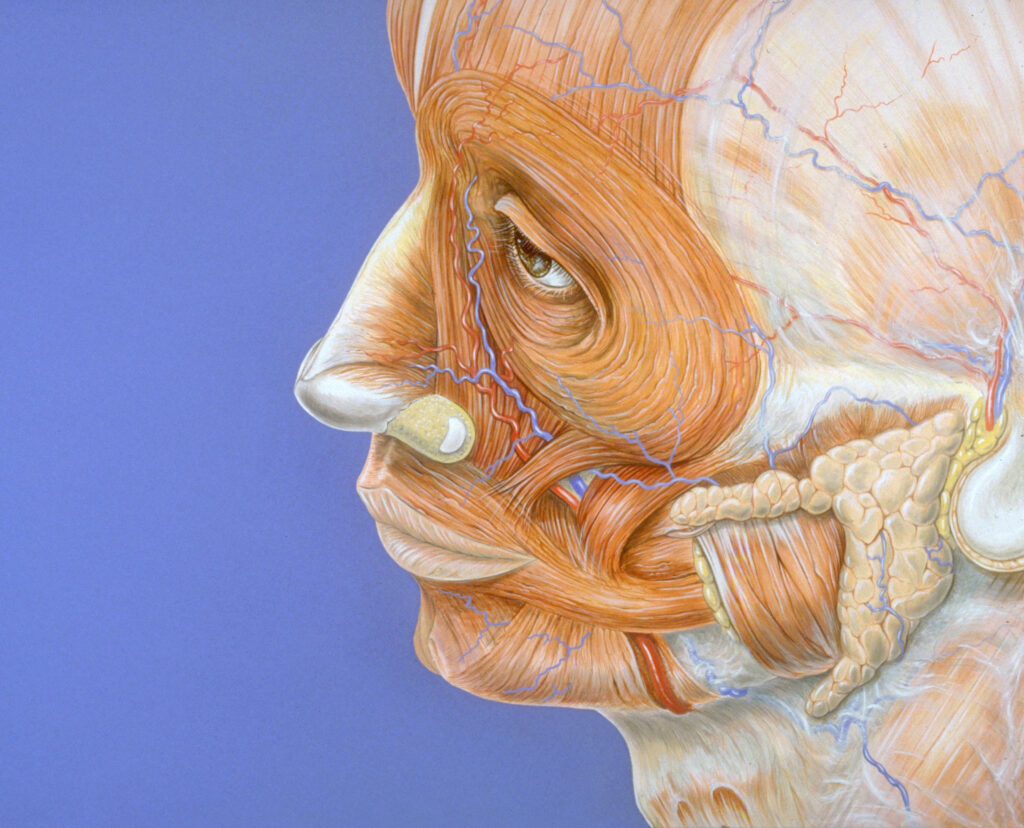Table of Contents
These Moves ERADICATE Many Craniofacial Complaints
Ever felt like your face is doing a workout it didn’t sign up for?
Or maybe the dentist said you’re grinding, and not in a way that would make David Goggins proud.
If you’ve got facial tension, jaw pain, or even issues like sleep apnea, I’ve got some game-changing info for you.
Read on to learn what it is.
The Magic of Myofunctional Therapy
Myofunctional therapy is like physical therapy for your face.
The key is teaching each part of the stomatognathic system to work independently. this system is a cluster of cranial stuff. I’m talking about:

- Facial muscles
- Tongue muscles
- Jaw
- Neck
With craniofacial problems, these areas have difficulty disassociating. Often, these regions work together during actions like muscles chewing or swallowing. With this, pressure can be altered in the cranium, and problems can ensue.
Pressure dysregulation examples include:
- Jaw pain
- Neck pain
- Face pain
- difficulty chewing and/or swallowing
- Ear fullness
- tinnitus
- eye strain
That’s not to say that issues with these movements cause problems. Poor coordination may perpetuate these issues, however.
What are we to do? 🤔
The Movement Key You MUST Learn
We want to promote strategies that encourage stomatognathic differentiation.
The crazy part? Doing this has some SOLID evidence.

Myofunctional therapy has been shown to:
- Reduce bruxism (teeth grinding at night)
- Improve face, neck, and jaw pain (weak evidence)
- Sleep apnea
- Improve your bite (weak evidence)
The key? Good tongue posture.
That means you need to be able to get your tongue up to the roof of the mouth with your lips closed.
The issue?
Most people STRUGGLE to close their lips with ease. Most people end up looking like they’re in the bathroom after a Wisconsin dairy farm bender. All strain.
The first step that EVERYONE glosses over is moving the face in a relaxed manner. But don’t worry, I got 5 moves that I start many clients with that work quite well!
5 Face Moves You Should Start TODAY
Each of these exercises works different facial muscles independently. And they’re harder than they look.
Cheek Blowing
Expand those cheeks like you’re storing food for winter. It helps promote facial external rotation.
Here’s how:
- Keep lips closed
- Isolate air into 4 different quadrants: each cheek, upper and lower lip
- Hold for a 5 count, 10 times. Done 2 times per day
If you struggle isolating air into these regions, regress in the following manner:
- Moderate: Use your hands to block the face where the unwanted air is going
- Easy: Swish water into each quadrant. Less water is more difficult
- Easier: Swish water and use the hand-blocking technique
- Easiest: Use solids (cotton, wax, foot) in your mouth to block the quadrant
- BRUH: Use solids and the hand-blocking technique
Tick Tock Clucks
This move teaches the tongue and face to move independently.
Here’s how
- Practice making a clucking noise with your tongue
- Make a big smile, then cluck
- Pucker your lips, then cluck
- Alternate these positions without straining neck
- Perform 50 clucks throughout the day
Horse Noise
Channel your inner horse and flutter those lips.
- Quiet nasal inhale
- Exhale and flutter your lips for as long as you can.
- Pace the exhale and flutter together
- Practice this for 2-3 minutes a couple of times a day.
Fish Face
This promote facial internal rotation.
- Pull those cheeks inward to make a fish face.
- Progress by moving lips up and down
- If you’re struggling, use your hands to push the cheeks inward.
- Practice this for 2-3 minutes a couple of times a day.
Surprised Grandma
This helps stretch the lips out to create an effective lip seal.
- Pull both upper and lower lips inward, like grandma took her teeth out
- Hold for a 10 count, rest, and repeat 10 times. Do 2 times per day
If you’re struggling to get the motion, this lip stretch below works great! Do 3-4 sets x 30 seconds:
Sum up
Relaxing facial muscles is a crucial step for fixing many craniofacial problems.
Once you’ve nailed these moves, I would then focus on nasal breathing.
To learn how to get better at that, I’d check out this post.
